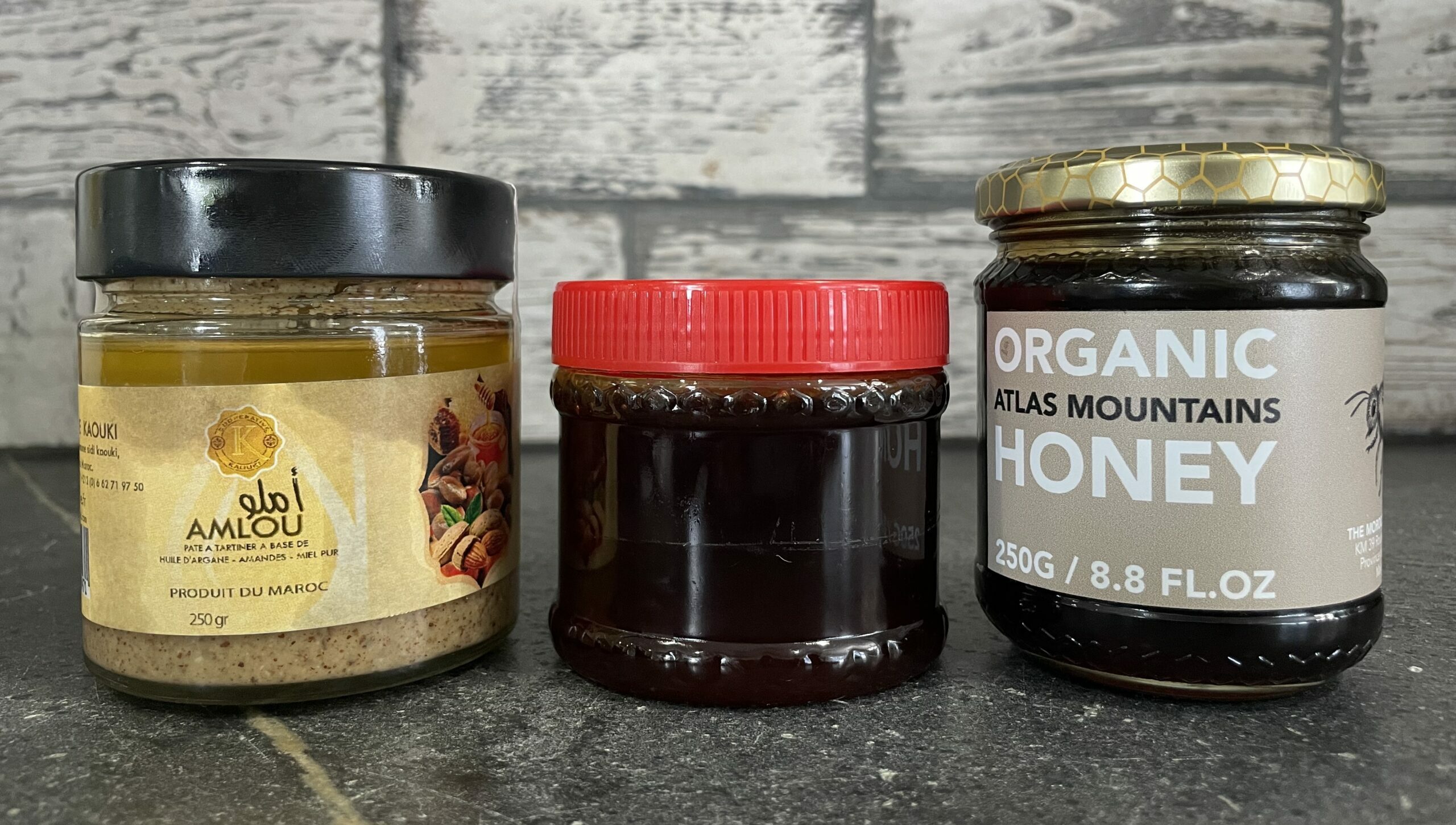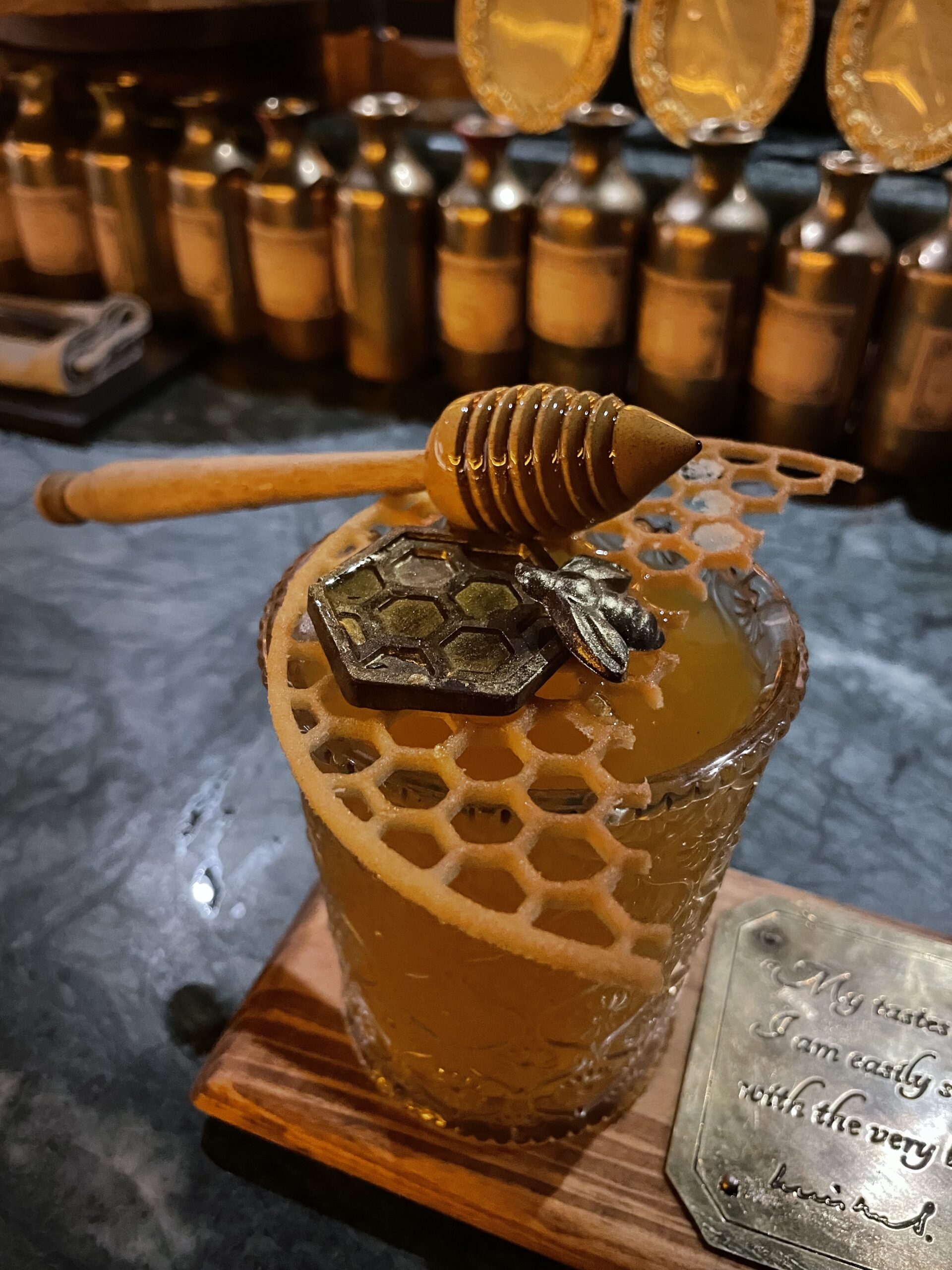Honey in the medinas
During our travels, we often find inspiration for flavors from foods and dishes enjoyed there. During our trip to Morocco last year, we tried several different types of honey. While we have many delicious honey flavors, increasing our types and flavor notes helps to diversify our offerings. Plus, we learned throughout our trip just how unique and delicious Moroccan honey is, with a storied history and friendly bee that create them.
Throughout our trip, we visited several different cities. As we walked through each of their medinas, we often saw shops that had jars with dozens of different types of what appeared to be honeys and nut butters. For the first few days, we didn’t know what was in each of the containers, still slightly overwhelmed by all the sights and sounds lighting our senses as we meandered through the windy streets. However, we quickly learned about these different staples through various conversations. At most of our hotel stays, our breakfast was served with jams, honey, and amlou, an absolutely delicious spread. When I asked about it, the waiter let us know that it is a paste made from almonds, argan oil, and honey, still traditionally made by mostly women cooperatives. We often had it with breakfast, where we spread it on baghrir (Moroccan pancakes) or bread.
Honey whiskey cocktail
At the only bar we visited on our trip, Barometre in Marrakesh, I had the Churchill, a cognac and whiskey cocktail. Made with thyme honey, orange, bitters, and almond liquor, it was a tasty blend of flavors that paired perfectly together. I particularly loved the honey notes, which ultimately sparked a conversation with the bartender about Moroccan honey. We discussed how my favorite meal every day was easily breakfast, largely in part because the honey was some of the best I’d ever tasted. I then learned that the largest traditional apiary (basically a bee yard) in the world is in Morocco, in the region of Souss-Massa.
The Apiary of Inzerki
While our trip was already too booked to allow a diversion down to the apiary, I quickly tried to learn as much as I could. The apiary of Inzerki dates back to the 16th century, and served as a collective for the many beekeepers in the region. The traditional hives are made of bark or braided reed, and shaped in long cylinders. The ends are closed with a wooden lid, and small holes are made for the bees to fly through. The region has an abundance of plants perfect for the honeybee, including thyme, argan trees, lavender, almond trees, and palm blossoms, which lends to their honey tasting different throughout the season.
In 1990 and 1996, devastating floods damaged the apiary, which led to many beekeepers abandoning their huts and using more modern and mobile beehives. Many attempts have been made to rehabilitate it since, and though it is not the only beehive in the region, it is still an important historical and cultural site that makes renowned honey.
We have a unique honeybee to thank for this delicious honey! The Yellow Saharan bee (Apis mellifera sahariensis) is believed to have been in the region for more than 2000 years, and is known as an excellent forager. They can travel up to 8 kilometers, are considered docile, and make incredible honey. Beekeepers from all across the country have been working with the government and other partners to learn ways to protect and preserve this bee species, and support local agro-biodiversity and farmers.
Honey Flavors
Honey is one of my favorite foods, not only for its delicious taste and versatility, but also for its health benefits. Adding a little honey to my tea, drizzling it over some yogurt and fruit, or swapping out sweeteners in recipes lends to a more comprehensive dish. During our trip to Morocco we scoured the medinas and stores to try as many different honeys as I could, and had so much fun doing it. I grabbed some Atlas Mountain honey at a store in Marrakesh and a jar of fig honey from the medina in Essaouira to take home with me. I’m always transported back to this amazing country every time I have some at home, and it only makes me want to go back again even sooner.
Our honey flavors are some of my favorites at TasteWorks. Ask for a sample today, to add a touch of that distinct honey sweetness to your products!

